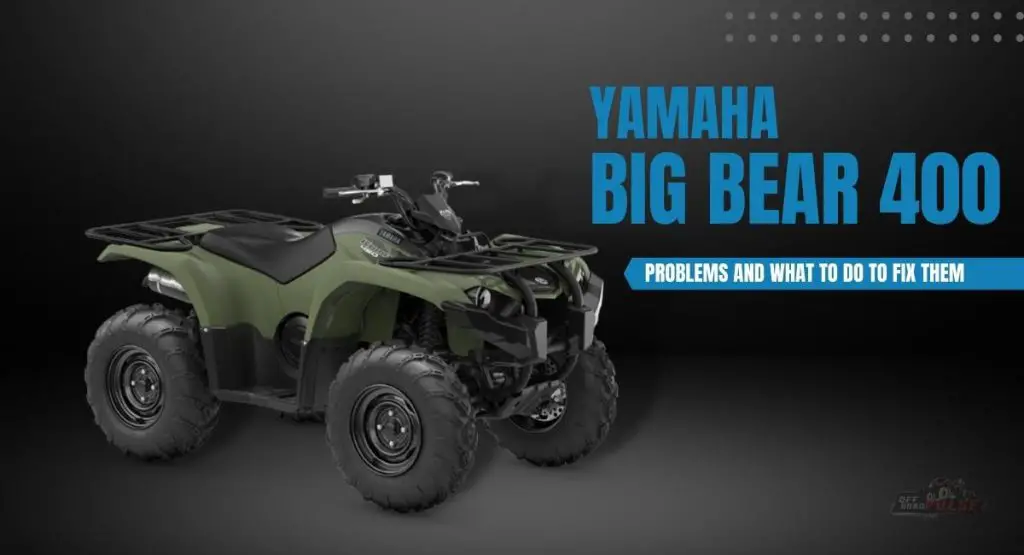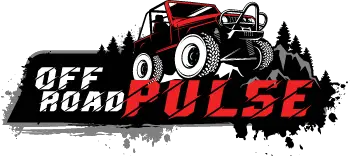Ever since it hit the trails in 2000, the Yamaha Big Bear 400 has captivated off-road enthusiasts with its exceptional durability and performance. As a trusted all-terrain vehicle, the Big Bear 400 has earned a loyal following among adventure seekers.
However, being aware of its common issues and addressing them effectively can make all the difference in your riding experience.
In this article, we delve into the top seven challenges that Yamaha Big Bear 400 owners often face and provide practical solutions to conquer them. Therefore, gear up, and let’s tackle these problems together to ensure you get the most out of your off-roading escapades!
The 7 Yamaha Big Bear 400 Problems and How to Fix Them
Now, let’s take a closer look at the seven most common Yamaha Big Bear 400 problems that may crop up during your off-roading adventures.
We’ll provide you with practical solutions to help you address each issue, ensuring that your all-terrain vehicle remains in optimal condition and ready for your next thrilling expedition.
With these tips in hand, you’ll be well-prepared to tackle any challenge your Big Bear 400 may face.

Yamaha Big Bear 400 Carburetor Problems
The Yamaha Big Bear 400 is often prone to carburetor issues, which can manifest as an engine running too lean or too rich. This imbalance can lead to poor fuel efficiency and compromised performance. Factors such as aftermarket accessories or a clogged air filter can exacerbate these problems by restricting airflow to the carburetor.
To address carburetor issues in your Yamaha Big Bear 400, begin by cleaning the air filter to ensure optimal airflow. If the problem persists, inspect the carburetor for dirt or debris and clean it as needed.
Adjusting the air-fuel mixture can also help enhance performance and fuel efficiency. Regularly checking and cleaning the carburetor will keep your all-terrain vehicle running smoothly and efficiently.
Yamaha Big Bear 400 Electrical Problems
Electrical issues in the Yamaha Big Bear 400 can manifest in various ways, including short circuits, engine starter troubles, or battery problems. These complications can result in a loss of power or even a total shutdown of the vehicle, impacting your all-terrain vehicle’s performance and reliability.
To tackle electrical problems, start by inspecting and, if necessary, replacing the battery. A weak battery can cause many issues, including difficulties with the starter.
Next, examine the fuses and wiring connections, ensuring that they are secure and free of corrosion. Additionally, damaged spark plugs can contribute to electrical problems and should be replaced if they appear worn or burnt.
By addressing these issues, you’ll help restore your all-terrain vehicle’s electrical system to optimal performance.
Yamaha Big Bear 400 Starter Problems
Starter problems are a common issue faced by Yamaha Big Bear 400 owners. These issues can arise due to corroded connection cables, a malfunctioning alternator, or a failing battery. If your all-terrain vehicle struggles to start or fails to start altogether, it’s likely that you’re dealing with a starter problem.
To address Yamaha Big Bear 400 starter problems, consider the following solutions:
- Ensure proper fuel levels in your off-roader.
- Maintain and clean the battery regularly.
- Repair or replace any damaged components within the starter system.
If you’re uncomfortable working on the starter system or if the problem persists, consult a professional mechanic for expert guidance and assistance.
Idle Problems with Yamaha Big Bear 400
Idle issues can negatively affect the performance and fuel efficiency of your Yamaha Big Bear 400. These problems often stem from an improper balance of air, fuel, spark, and a dirty carburetor. If your all-terrain vehicle experiences stalling or rough idling, it’s likely that you need to address idle-related issues.
To tackle Yamaha Big Bear 400 idle problems, begin by regularly maintaining the air intake system and cleaning the carburetor to ensure the correct air-fuel mixture for optimal performance.
Additionally, inspect your four-wheeler for any air and fuel leaks that may be contributing to idle problems. Addressing these concerns can improve your all-terrain vehicle’s performance and reduce the chances of stalling or rough idling.
Yamaha Big Bear 400 Suspension Problems
Suspension problems can negatively impact the ride quality and handling of your Yamaha Big Bear 400. Common issues include worn or damaged shocks, bushings, and ball joints. These problems can lead to an uncomfortable ride, reduced stability, and decreased off-road capabilities.
To address Yamaha Big Bear 400 suspension problems:
- Inspect the shocks for signs of wear or damage, such as oil leaks or dents, and replace them if necessary.
- Examine the bushings and ball joints for wear, cracks, or excessive play.
- Replace any worn components to maintain proper suspension function.
- Ensure that the suspension bolts are tightened to the correct torque specifications, as loose bolts can lead to premature wear and component failure.
- Regularly maintain and lubricate the suspension components to prolong their lifespan and ensure optimal performance.
If you’re not confident in diagnosing and repairing suspension issues, it’s best to consult a professional mechanic for assistance.
Transmission Problems with the Yamaha Big Bear 400
Transmission problems are not unique to the Yamaha Big Bear 400, as they can affect a range of off-road vehicles and off-road vehicles. These issues typically present as difficulties in shifting gears and may persist over time. In some cases, a dirty, damaged, or improperly functioning clutch is the primary cause of transmission problems in the Big Bear 400.
The clutch plays a vital role in gear shifting, transferring rotational power from Yamaha’s engine to its wheels. If the clutch springs weaken or the clutch becomes dirty, your quad bike may struggle to shift gears, potentially getting stuck in a single gear.
To address Yamaha Big Bear 400 transmission problems, consider the following tips:
- Make sure there’s a proper alignment between the clutch and your all-terrain vehicle’s transmission system.
- Keep your clutch in good condition, which is essential for preventing transmission problems in your Big Bear 400.
- Clean the clutch once or twice a year to prevent the buildup of dirt and debris..
- If you’re comfortable with mechanical tasks, inspect your off-roader’s gearbox for any existing issues that may contribute to shifting problems.
- Replace weakened or damaged springs within the transmission clutch to ensure smooth gear shifting.
Yamaha Big Bear 400 Brake Problems
Brake problems are a significant safety concern for any vehicle, including the Yamaha Big Bear 400. Properly functioning brakes are essential for ensuring the safety of both the rider and those around them. Common brake problems may include spongy brake feels, worn brake pads, broken brake lines, or poor brake performance.
To address Yamaha Big Bear 400 brake problems, consider the following solutions:
- Spongy brake feels: If the brake lever feels spongy when pressed, it could indicate air in the brake lines or low brake fluid levels. Bleed the brakes to remove any trapped air and top up the brake fluid as necessary.
- Brake pad wear: Inspect the brake pads regularly and replace them if they show signs of excessive wear, as worn brake pads can lead to reduced stopping power and create a dangerous situation for the rider.
- Damaged brake lines: Regularly inspect the brake lines for any signs of wear, cracks, or leaks. Damaged or leaking brake lines can result in a loss of brake fluid and reduced braking efficiency, so replace them if necessary.
- Poor brake performance: Thoroughly inspect the brake system if your Yamaha Big Bear 400’s brakes feel weak or less responsive than usual. This issue could be due to worn brake pads, contaminated brake fluid, or glazed rotors. Replace any worn components and flush the brake fluid as needed to improve brake performance.
The Bottom Line
The Yamaha Big Bear 400 is a dependable and adaptable off-road all-terrain vehicle that has proven its worth. While it has its share of common difficulties, such as carburetor, electrical, starting, idling, and ignition issues, regular maintenance, and prompt repairs can keep these issues from becoming serious.
Yamaha Big Bear 400 owners may keep their all-terrain vehicles in good working order for years to come by remaining informed and proactive.
Also Read: Tracker 300 ATV Review– Troubleshooting the Most Common Problems
You may continue to enjoy all of the thrills and pleasures that the Yamaha Big Bear 400 offers by fixing these common issues and carefully checking its performance.
Remember, regular maintenance and a little bit of care can go a long way in preserving your all-terrain vehicle’s longevity and reliability, allowing you to focus on what truly matters: the thrill of exploring the great outdoors.




